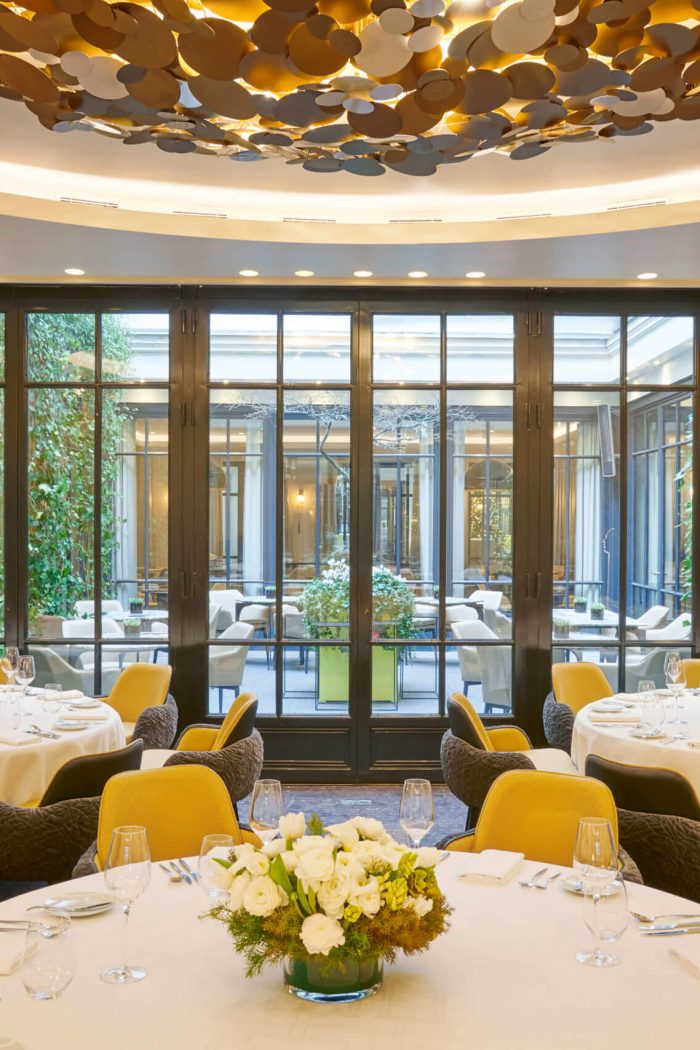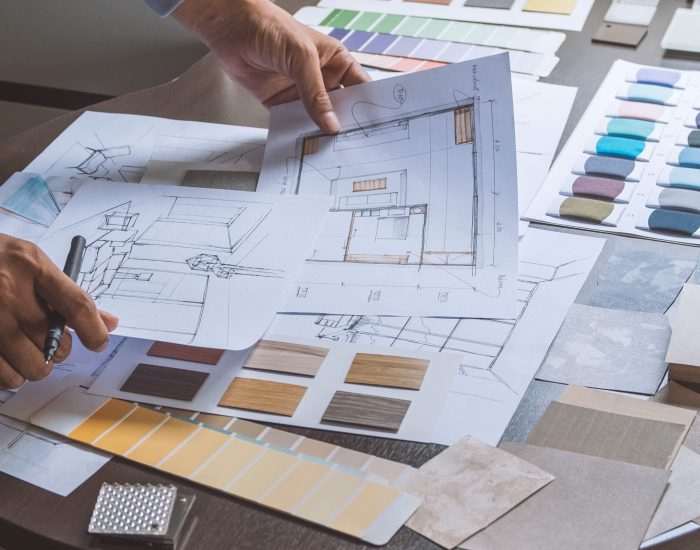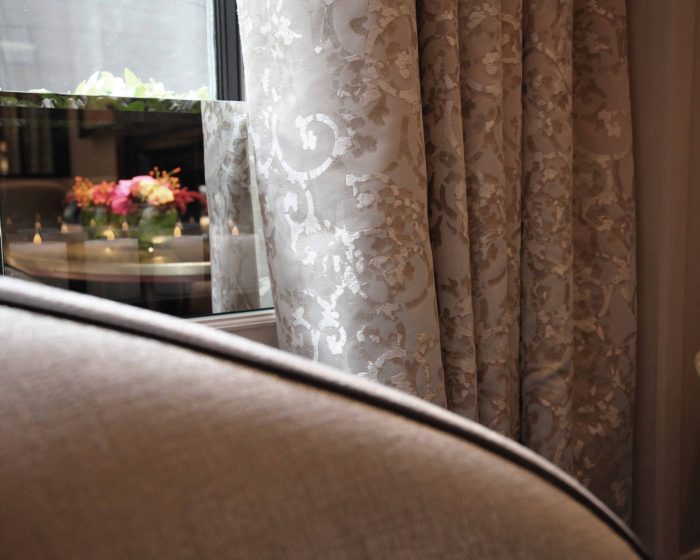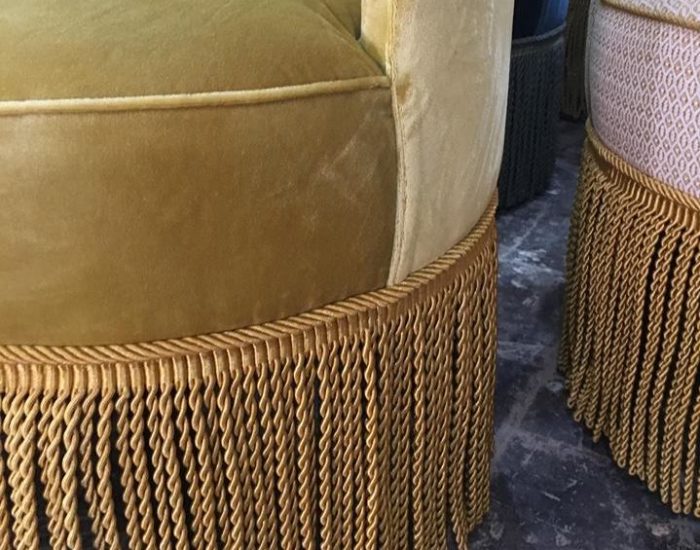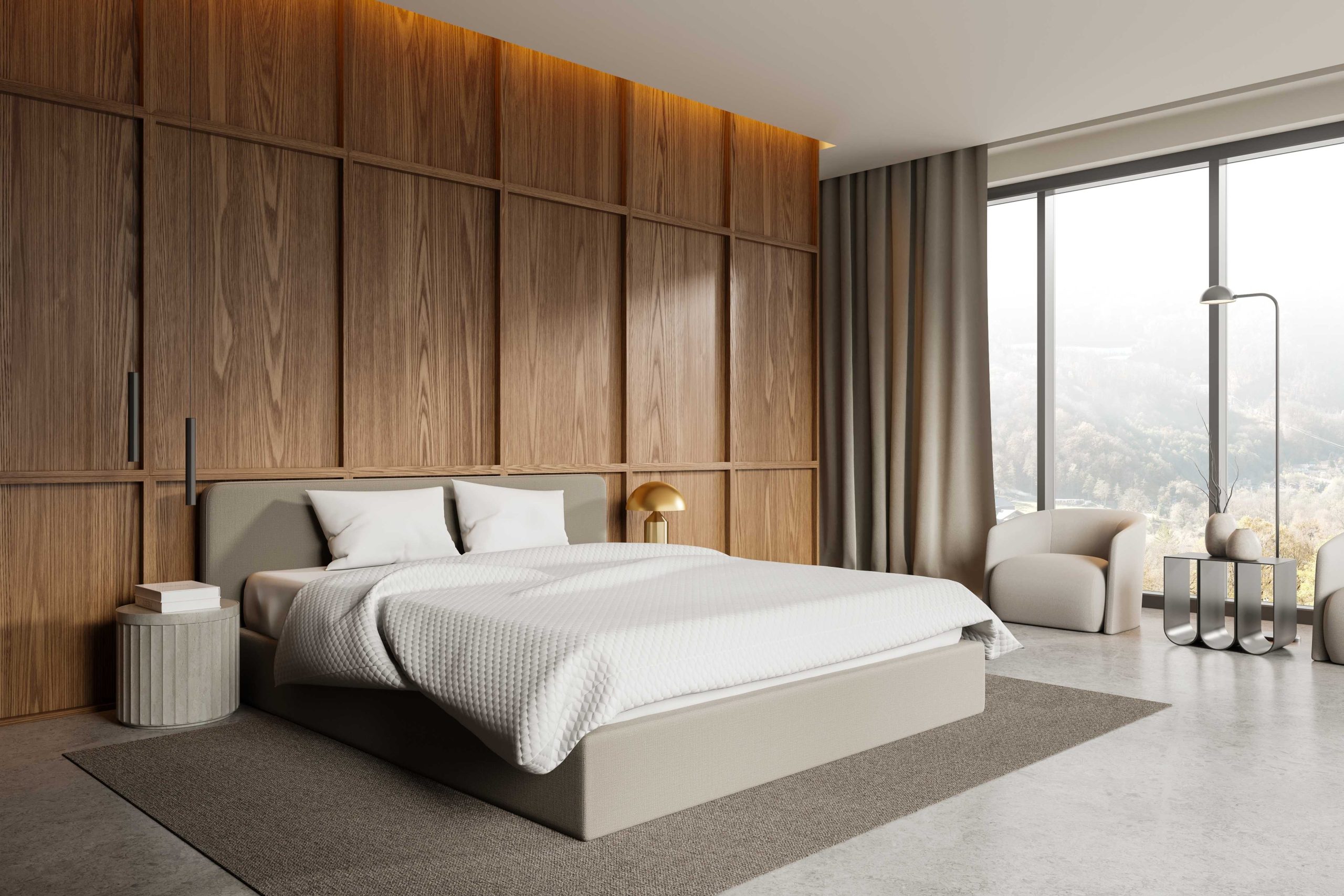Changing furniture for a hotel or restaurant requires particular attention to fabric selection. Whether for chairs, curtains, armchairs, benches, stools, poufs or even floor coverings, the fabric must meet the customer’s expectations and last over time.
To select the right fabric for a project, a number of factors need to be taken into account:
Where will the project take place?
- The M1 standard: applicable in France, which defines the behavior of a material under the effect of flames. It is set by taking into account the time during which the fabric resists fire.
- B1 standard: applicable throughout Europe, this standard provides companies with information on flame-retardant fabrics (all fabrics treated against fire, making them more resistant to flames).
High stain resistance for easy maintenance
In the food service industry, especially in high-end restaurants, the premises must be constantly maintained.
During room service, team members may spill liquids or solids that are sometimes difficult to remove. To save time for the teams in charge of cleaning and setting up the rooms, some fabrics can be maintained more easily than others.
One of the most popular materials for easy maintenance is leather. By using a soft cloth moistened beforehand, you can remove dust or other visible traces without much difficulty.
To significantly reduce the risk of staining, it is imperative to:
- Ban natural fabrics such as linen or cotton and favor synthetic fabrics.
- Pay attention to the choice of color, since by adopting light colored fabrics, you will naturally expose yourself to more visible stains than on darker fabrics.
The golden rule remains unchanged: avoid natural fabrics which tend to be more fragile than synthetic ones.
- To obtain fabric, simply visit a fabric publisher or distributor. A visit to a showroom gives you an overview of what’s new: on average, two collections are released each year, including a “classic” range and a “fireproof” range aimed at specific establishments.
As an interior designer, it’s also an opportunity to find out about the latest materials and manufacturing techniques, which can help give meaning to a project. Each fabric tells a story, which can sometimes be used to convey an emotion to the customer, especially when the fabric appeals to the sense of touch. - Make an initial broad selection of fabrics and then refine it according to the challenges of the final project, bearing in mind that the fabric must first and foremost meet a very specific customer need. Every project is different, whether it’s a curtain or a seat, and the fabric used will never be the same. The question to ask at this stage is: “Does this fabric represent the spirit of the project?
- To materialize your ideas, there’s nothing better than a moodboard on which the pre-selected fabric samples are arranged. This makes it easier to test the coherence of the fabrics.
- The final choice will largely depend on the identity of the interior designer. This is where tests are carried out, juxtaposing fabrics with surrounding elements such as walls or floors. In this way, it’s possible to project yourself into the future environment with all the materials.
- Every project needs to tell a story, and fabrics are a good source of inspiration and will provide a tone throughout a project.
